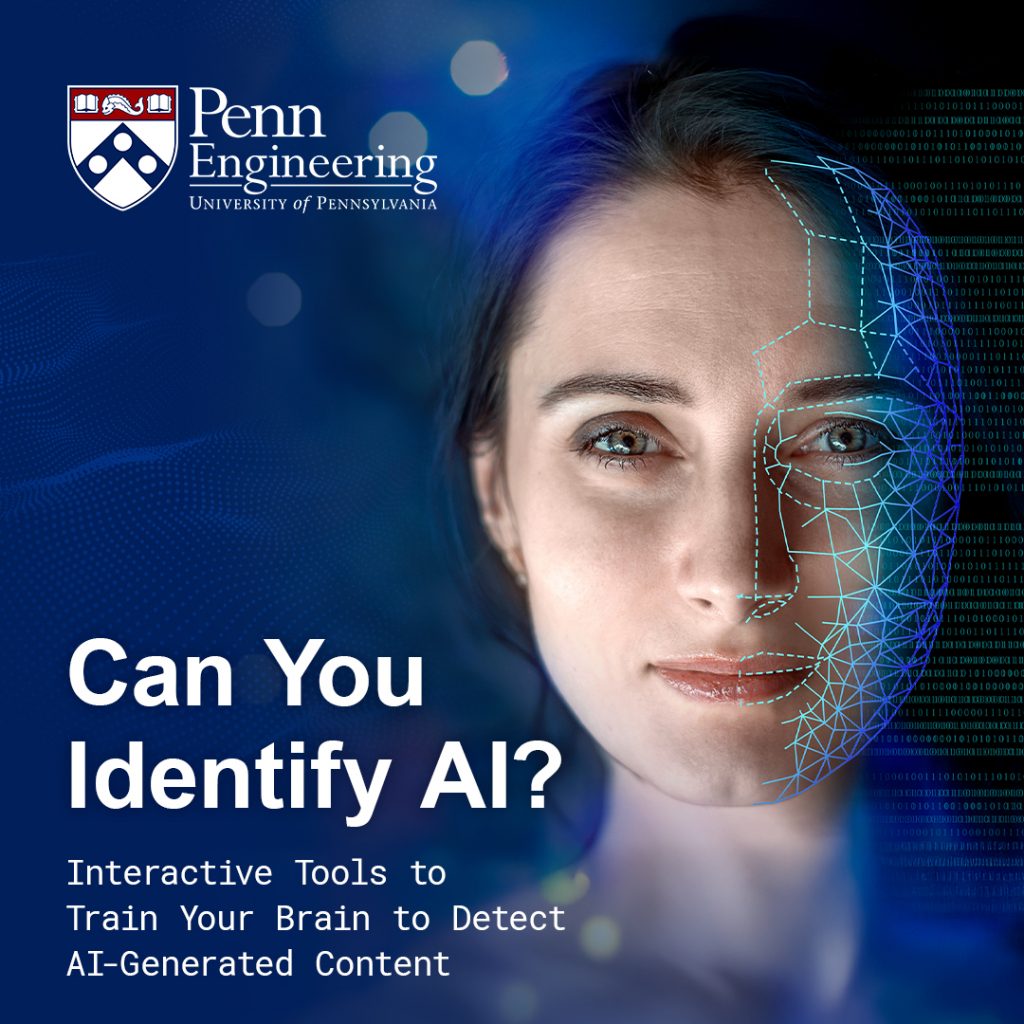Can You Identify AI? Interactive Tools to Train Your Brain to Detect AI-Generated Content

The question of whether or not text and images are authentic or produced by AI is hugely significant–– and this challenge will only intensify as AI technologies continue to advance and proliferate.
Developing skills to identify AI-generated text and images is essential for keeping pace with the rapidly evolving AI landscape. The following are two engaging websites worth taking a look at to help train your brain to recognize AI-generated material.
Identifying AI-Generated Text – A Penn Research Project
If you want to train yourself on identifying AI-generated text, here’s a valuable tool to explore. Penn Engineering Online’s Program Director for the Online Master of Science in Engineering in AI program, Chris Callison-Burch, together with his students, created a game–– also serving as an academic research project–– to detect AI-generated sentences. The platform known as RoFT challenges users to notice at what point written text has begun to be generated by a machine.
Check it out: https://roft.io/
When playing the game, users select from content topics such as short stories, recipes, presidential speeches, and news articles. Users will be shown an initial passage of text that was written by a human. Then, as a continuation of that text, subsequent sentences appear one at a time, and users must decide at what point the text begins to be written by a computer, if at all. Users are awarded points for correct answers, and yes, there is a public leaderboard on the site to keep score of the top performers.
Distinguishing AI-Generated Images
The website thispersondoesnotexist.com uses AI to instantly generate photorealistic faces of fictitious people. Each time you refresh the page, a new face is produced. Can you identify characteristics of these faces that indicate they are AI-generated? Sometimes the teeth are a giveaway, or sometimes it’s the reflection in the eyes or the background behind the person.
Take a look at the faces: thispersondoesnotexist.com
The site “This Person Does Not Exist” is powered by a deep learning model called a Generative Adversarial Network (GAN). A GAN is made up of two parts: a generator and a discriminator. The generator creates new faces by analyzing patterns in a massive dataset of human photos. The discriminator attempts to determine whether those faces are real or fake. Over time, the generator learns to create faces that are increasingly realistic.
More specifically, the site uses StyleGAN, a version of GAN developed by NVIDIA. StyleGAN, which was trained on thousands of real photos, is able to generate extremely detailed faces with a natural appearance. It works by separating features like age, gender, lighting, and facial expression into controllable elements during the generation process.
Training Your Eye for AI
As it evolves, AI will continue to influence and shape numerous aspects of daily life, and content produced by AI will be encountered more frequently across a variety of settings. As its presence grows, the ability to critically evaluate content and detect AI-generated materials will prove to be an increasingly valuable tool for the future.
Are you ready to test and refine your AI detection skills? Check out the webpages above, and learn how you can take your AI training to the next level with Penn Engineering Online’s portfolio of AI offerings.
To learn more about our Online Master of Science in Engineering in AI (MSE-AI Online) degree program, check out our Academics page or watch a recording of our MSE-AI program webinar with Program Director Chris Callison-Burch.
